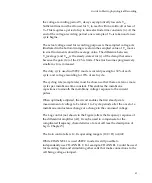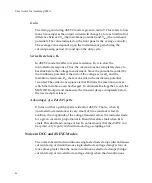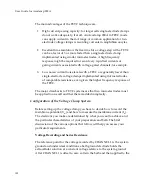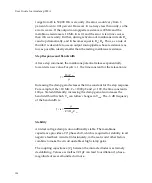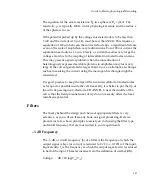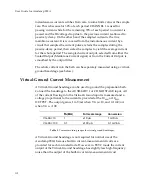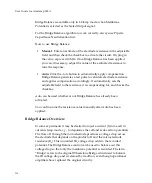
Guide
to
Electrophysiological
Recording
The
equation
for
the
access
resistance,
R
a
,
in
a
sphere
is:
R
a
=
ρ
/
4
π
r.
The
resistivity,
ρ
,
is
typically
100
Ω
cm
for
physiological
saline
and
the
radius,
r,
of
the
sphere
is
in
cm.
If
the
potential
picked
up
by
the
voltage
microelectrode
is
to
be
less
than
5
mV
and
the
current
is
10
μ
A,
R
a
must
be
less
than
500
Ω
.
This
requires
a
separation
of
160
μ
m
between
the
microelectrode
tips,
a
significant
distance
even
on
the
scale
of
amphibian
oocyte
dimensions.
For
a
100
nA
current
the
separation
need
only
be
1.6
μ
m.
Clearly,
as
current
becomes
very
large
the
voltage
error
due
to
the
coupling
of
intracellular
microelectrodes
worsens.
This
may
present
a
special
problem
when
the
concentration
of
heterologously
expressed
excitable
proteins
in
amphibian
oocytes
is
very
large.
If
the
current
generated
is
larger
than
10
μ
A,
an
alternative
technique
such
as
measuring
the
current
using
the
macropatch
technique
might
be
considered.
It
is
good
practice
to
keep
the
tips
of
the
two
intracellular
microelectrodes
as
far
apart
as
possible
inside
the
cell.
Generally,
it
is
better
to
put
the
tip
of
the
current
‐
passing
microelectrode,
CHANNEL
2,
near
the
middle
of
the
cell
so
that
the
field
potentials
near
its
tip
do
not
unevenly
affect
the
local
membrane
potential.
Filters
The
theory
behind
the
design
and
choice
of
appropriate
filters
is
very
extensive,
as
you
will
see
from
any
book
on
signal
processing.
Here
we
provide
just
a
few
basic
principles
to
assist
you
in
choosing
the
filter
type
and
cutoff
frequency
that
are
most
suited
to
your
experiments.
–3
dB
Frequency
The
–3
dB,
or
cutoff,
frequency
(f
c
)
of
a
filter
is
the
frequency
at
which
the
output
signal
voltage
(or
current
)
is
reduced
to
1/
√
2
(
i.e.,
0.7071)
of
the
input.
Equivalently,
f
c
is
the
frequency
at
which
the
output
signal
power
is
reduced
to
half
of
the
input.
These
terms
arise
from
the
definition
of
decibel
(dB):
Voltage:
dB
=
20
log(V
out
/V
in
)
107

